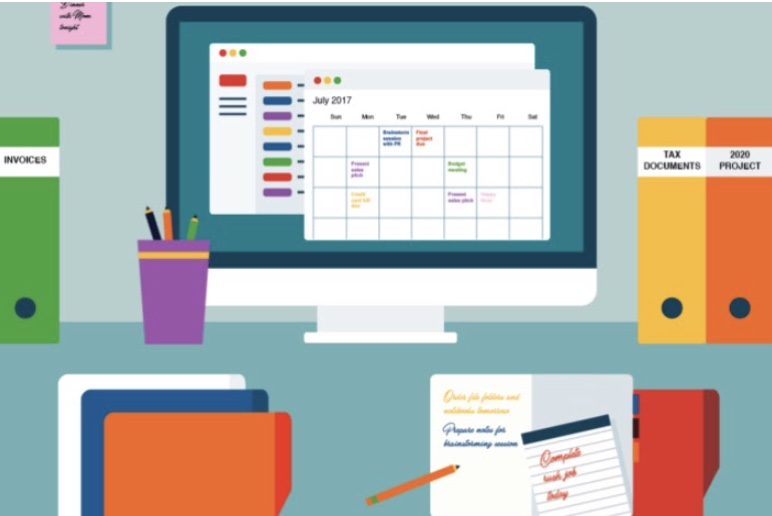The Power of Color Coding
March 2, 2021
Color coding is a system of displaying information using color as an organizational tool. Colors are generalized and standardized to express information concisely and since color is universal, as an organizational tool it can help provide additional meaning in a simple manner. Color coding is a powerful tool because humans can instinctively recognize colors and associate meaning to color faster than we can to text according to Smead. Color provides an additional way to provide self cues and prompts to keep on top of life. Color also helps save time in retrieving and filing information which is why color coding workspaces is effective to increase productivity.
The psychology of color has always been of interest to artists. In the late 1800s, Russian painter Wasilly Kandinsky wrote about the impact of color in Concerning the Spiritual in Art – exploring how colors and art awaken emotional and spiritual qualities in the beholder. He conducted experiments to observe the spiritual and inherent emotional properties of color and described gray as invoking “immobility and rest” orange was “like a man convinced of his powers” and purple as “sad and ailing.” From there more research and speculation was conducted until a good understanding of the psychology of color was developed. Specific colors tend to evoke certain emotions and feelings that can influence brain function. According to CDI Spaces, blue is an intellectual color that evokes a sense of calm that improves focus and productivity. Using colors like blue for workspaces as either paint colors or accent colors in stationary can make your workspace better suited for homework or work in general.
Color coding and organization using color seems daunting to set up and daunting to maintain but there are a few tips that can make the transition easier. First, match feelings to colors and corresponding tasks with those feelings to that color. For example, if red in your mind shows urgency, you can keep bills or assignments in a red folder so that you remember that the work in red is urgent. Make sure to maintain the same color for related items in the category. For example, if you have a science class you associate it with the color green, make sure the notebook is green and the folder is green so you don’t mix up the papers with other classes. Don’t overuse color just to look aesthetically pleasing, use color that helps you stay organized and only that much color. Finally, keep it simple. Color coding is meant to make your life easier, not more challenging to maintain organization.












